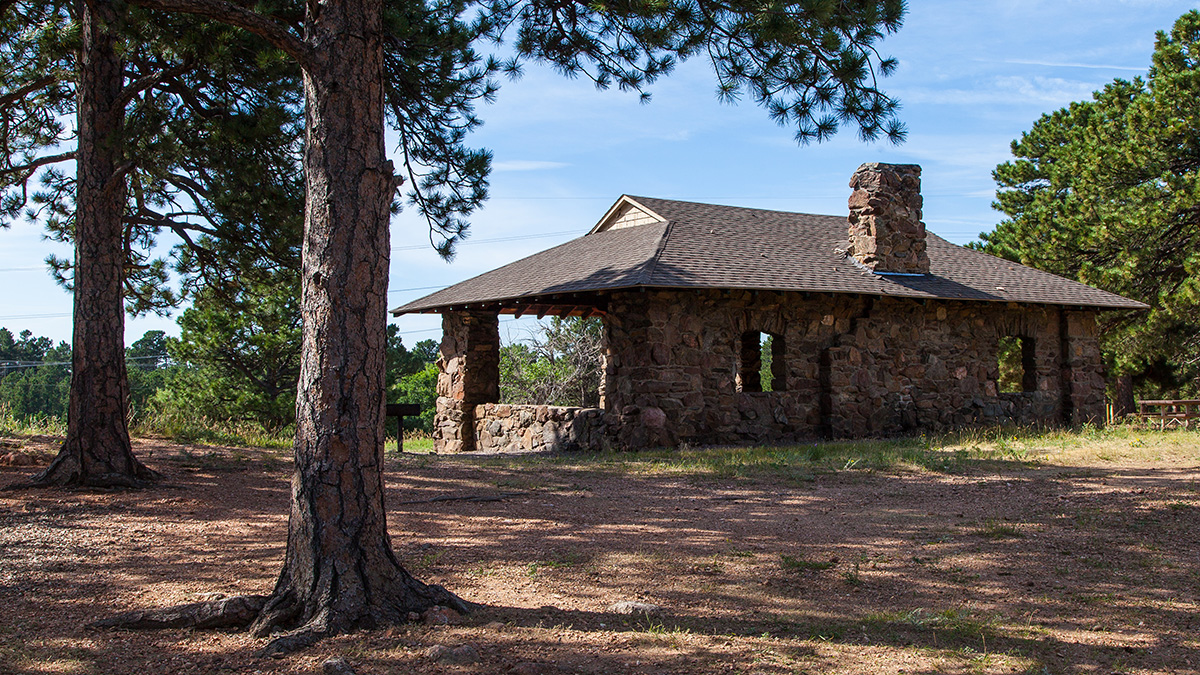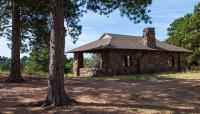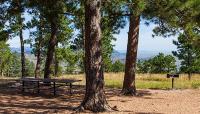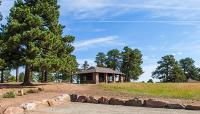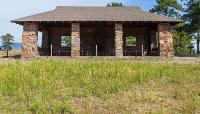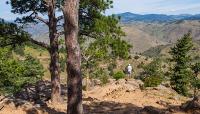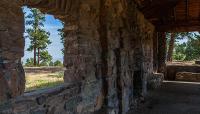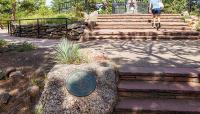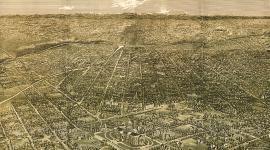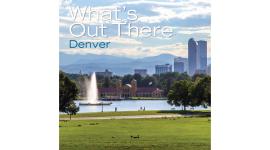Landscape Information
Long a favored vantage point where the Ute Tribe surveyed the Great Plains and Rocky Mountains, this rugged land was acquired in 1917 by the City of Denver to be included as part of the 14,000-acre Denver Mountain Parks system. Located twenty miles west of downtown Denver on the summit of Lookout Mountain and overlooking the town of Golden, this 64-acre park includes the museum and grave of William “Buffalo Bill” Cody.
Frederick Law Olmsted, Jr. advised the City to purchase the land for the construction of the Lariat Trail Scenic Mountain Drive, and for use as a park. The City, on Olmsted’s advice, acquired land on both sides of the planned road to protect the viewshed and to restrict undesirable roadside development. Following Olmsted’s recommendation, S.R. DeBoer developed the final design.
One of the park’s features, the picnic area, is predominantly an open ponderosa pine forest with native grasses and shrubs. Designed by architects W.E. and A.A. Fischer, a Rustic-style picnic shelter comprised of local stone and timbers was constructed by 1916. Large rocky outcroppings to the northeast of the shelter, overlook the byway and the Rockies. The majority of the park is a steep north facing slope dominated by Douglas-fir forest, inaccessible but for the scenic road that snakes along the slope wrapping around to the summit from the east. Constructed in 1917, Buffalo Bill’s grave lies to the east of the picnic area. The grave and the park are connected by a hiking trail, though they are designed to be completely distinct. The site was listed on the National Register of Historic Places in 1990.




